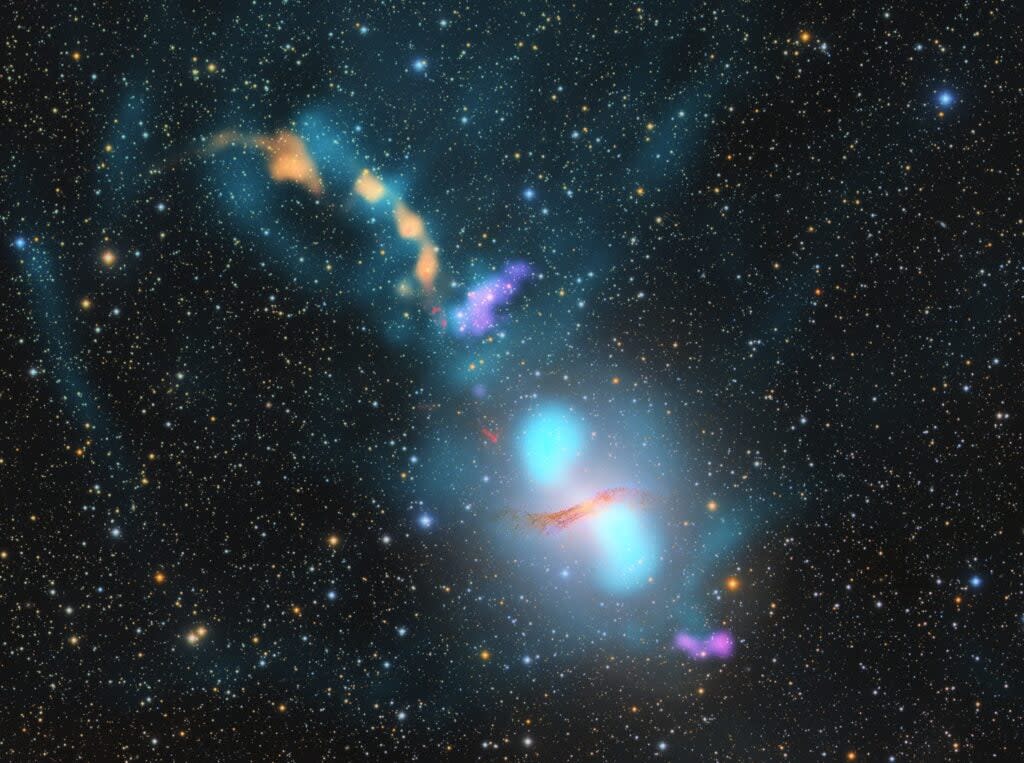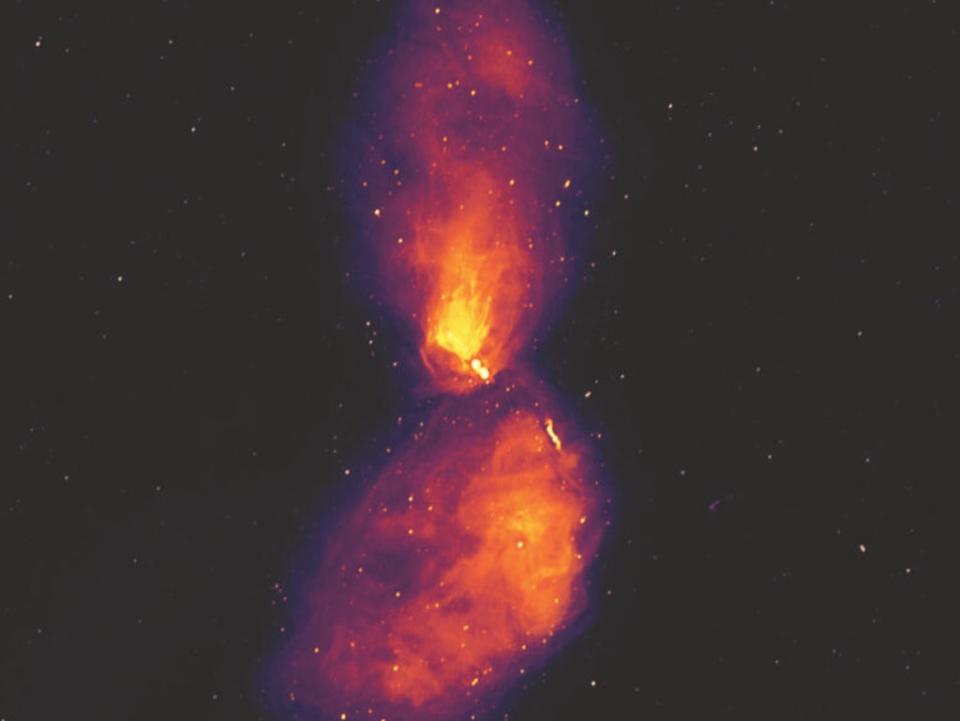Astronomers capture eruption of supermassive black hole feeding

Astronomers have captured the most comprehensive image of an emission from Earth’s nearest feeding supermassive black hole.
The radio emission originates from the black hole in the centre of the Centaurus A galaxy, about 12 million light years away from our planet.
Black holes ‘feed’ on gas that falls into it, and as it does so material is ejected at velocities nearing the speed of light. Over millions of years, this can cause ‘radio bubbles’ to grow – the same kind that was found in our own Milky Way galaxy recently.
“These radio waves … [form] a disc around the black hole, and as the matter gets ripped apart going close to the black hole, powerful jets form on either side of the disc, ejecting most of the material back out into space, to distances of probably more than a million light years,” Dr Benjamin McKinley of the Curtin University node of the International Centre for Radio Astronomy Research (ICRAR) said.
“Previous radio observations could not handle the extreme brightness of the jets and details of the larger area surrounding the galaxy were distorted, but our new image overcomes these limitations.”
When viewed from Earth, the eruption from Centaurus A extends eight degrees across the sky – the length of 16 full moons laid side by side.

“We can learn a lot from Centaurus A in particular, just because it is so close and we can see it in such detail,” Dr McKinley said. “Not just at radio wavelengths, but at all other wavelengths of light as well.
“In this research we’ve been able to combine the radio observations with optical and x-ray data, to help us better understand the physics of these supermassive black holes.”
The information gathered from this event has provided support for a novel theory called ‘Chaotic Cold Accretion’, which argues that clouds of cold gas condense in the halo around the black hole and feeds it. The black hole responds by launching the energy back, causing the radio bubbles. The study, published in Nature Astronomy, is one of the first to probe this accretion ‘weather’ in such detail.

